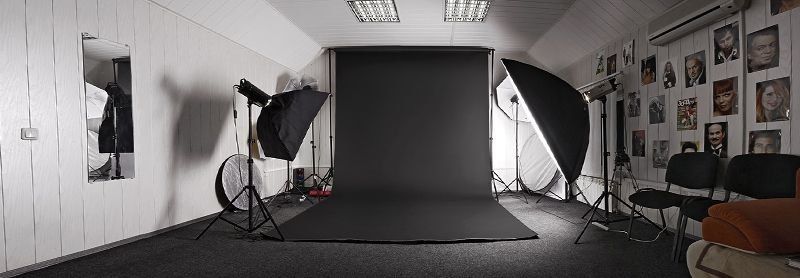Overview of the best museums in Rostov-on-Don 2022

Rostov-on-Don is one of the ten megacities of our country and has a unique southern flavor. Located along the banks of the Don River, the city has an ancient origin, has an unusual, diverse architecture dating back to different eras, numerous cathedrals and temples, a large number of unique sculptures and monuments. Rostov-on-Don is also rich in natural attractions and parks, and, of course, various museums. The most famous and popular of them will be discussed.
Content [Hide]
The best museums in Rostov-on-Don
This includes large and significant museums that have the largest number of positive reviews from residents and guests of the city and provide the maximum amount of information about their activities.
Rostov Regional Museum of Local Lore
votes 1
Address: Bolshaya Sadovaya street, 79
Opening hours: daily, except Monday, from 10:00 to 18:00
Phone: ☎ +7 863 263-55-72
This is one of the largest local history museums in the south of Russia. It was founded in 1937 and is currently the leading scientific center for ethnography, history, and culture of the Don.
The rich collections of the museum include over 375 thousand objects, the most interesting and impressive exposition, presented in the hall "Treasures of the Don Steppes", has 2 thousand unique items of the 4th century BC. BC. - VIII century. AD The museum presents various expositions, interesting exhibitions are organized, lectures and various thematic events are held. In addition, the museum is a member of the Union of Museums of Russia, takes part in international projects, and presents its collections in countries such as Japan, France, Germany, and Scotland.
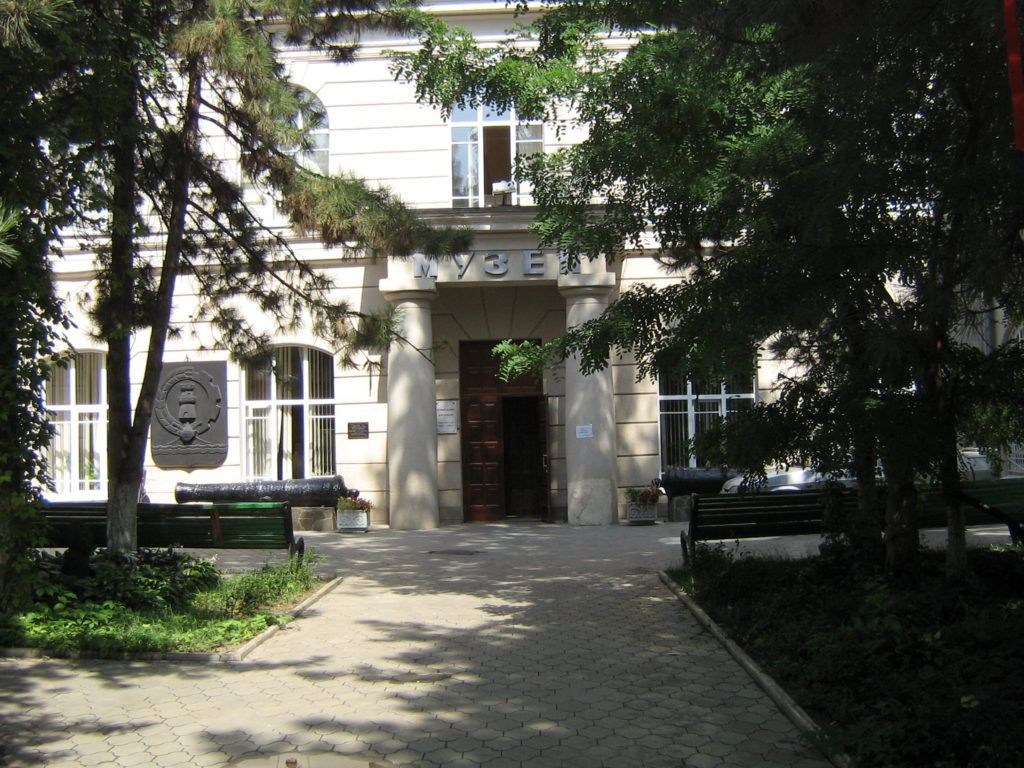
Also, the museum became famous for social projects (“The Forgotten Regiment”, “Holy Rus', Keep the Orthodox Faith” and others) aimed at combating the falsification of military history, as well as the formation of a historical worldview, the preservation of Christian values and familiarization with the culture of the Don peoples.
Collections
The museum fund keeps unique items that represent not only the natural wealth of the multinational Rostov region, but also reflect all its historical periods, as well as culture, spiritual and material.
Natural science collection.Here are stuffed rare birds and animals that live exclusively in the Don steppes. These are representatives of the fauna listed in the Red Book, as well as a large collection of butterflies of the entomologist M.A. Cornelio.
Ethnographic collection. It contains amazing and unique clothes of the peoples of the Don - festive fur coats and headdresses made of silk and velvet trimmed with pearls and gold embroidery. Embroidered shirts, traditional costumes, handicrafts, as well as various household items, most of which are real works of art. The same collection includes folk instruments of the Don people, as well as music boxes, gramophones and other musical mechanisms.
Collection of weapons. Here are memorial Cossack sabers and checkers, as well as military weapons from the First World War and the Great Patriotic War.
Collection of numismatics. It consists of many sections, and contains not only coins, but also orders and medals, signs, tokens and badges of different countries and time periods. Here you can also see real treasures of gold (Bosporus) and silver coins (from the time of Ivan IV the Terrible) and copper, with the monogram of Catherine II.
Collection of documentary materials. It includes two large sections, a photo fund and a collection of written sources. The Photo Fund is a collection of amateur and author's photographs of the late 19th and early 20th centuries, unique photographs of photojournalists from the Great Patriotic War, photographs of scientists-researchers of the nature of the Don region and the North Caucasus, as well as negatives, photographic equipment and albums.
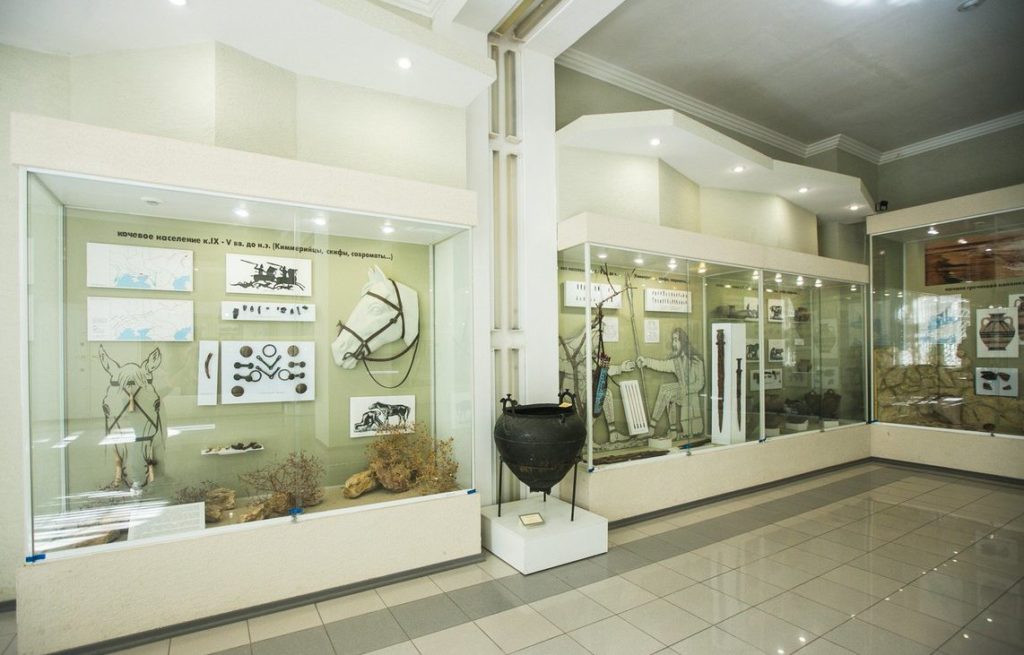
The collection of written sources includes documents and rare editions of books, as well as mass printed editions. The fund of M.A. is also kept here.Sholokhov (collection of the writer's books, translated into the languages of the peoples of the world, with autographs of famous political and public figures).
Exhibitions
The museum features exhibitions such as:
- "Treasures of the Don steppes";
- “The weapon of Russian valor: edged and firearms of the 17th-20th centuries. from the ROMK collection”;
- “Talents and fans. Nakhichevan-on-Don is a city of theater-goers”;
- "Adygs - warriors, knights, hunters";
- Exhibition of reproductions of works by Hieronymus Bosch and Pieter Brueghel;
- "Revived Tales";
- Exhibition of reproductions of paintings by Frida Kahlo;
- Open storage exposition "Porcelain";
- Open storage exposition "Musical Lounge";
- The main exposition of the department "Museum of Russian-Armenian Friendship";
- Open storage exposition "Historical and household items of Rostov and Nakhichevan".
Cost (in rubles)
Ticket for the main exhibition - 120; for schoolchildren, disabled people and conscripts - 50; for preschoolers - 30;
Ticket for an interactive tour - 100.
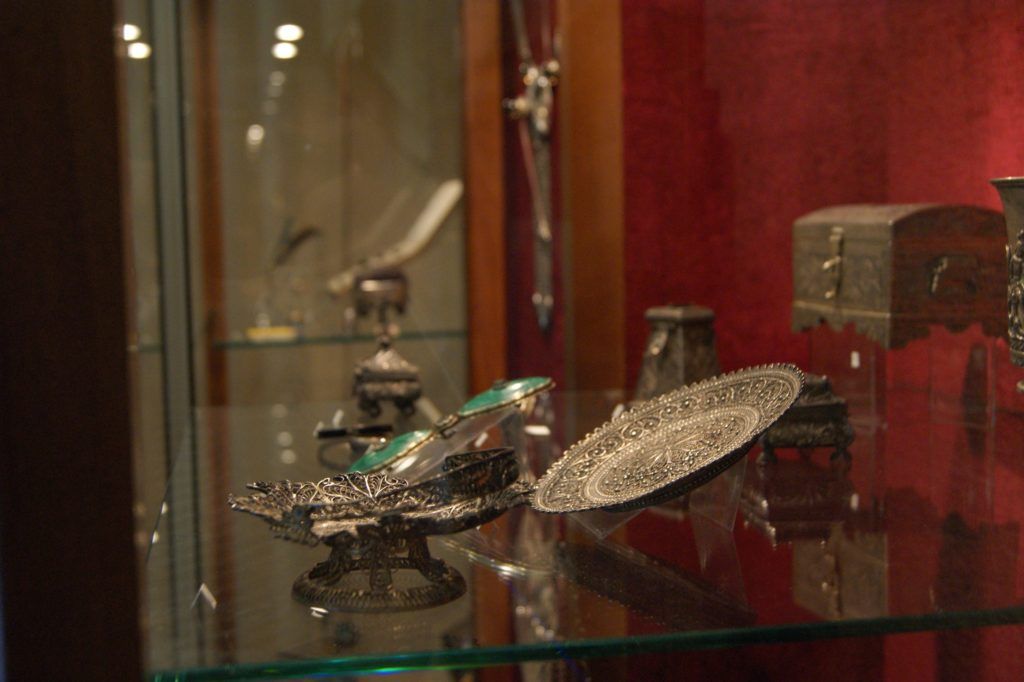
- interesting exhibitions;
- a large number of exhibits;
- a lot of positive impressions;
- unusual and educational activities;
- convenient location;
- friendly and polite staff.
- part of the museum is closed;
- high ticket prices.
State Museum-Reserve M.A. Sholokhov
votes 0
Address: Bolshaya Sadovaya street, 125/69
Opening hours: daily, except Monday, from 9:00 to 16:00
☎ Phone: +7 863 532-10-62
Founded in 1984, the only state museum-reserve in the country dedicated to the writer M.A. Sholokhov, his life and work: the museum stores more than 70,000 items that once belonged to the writer's family, including numerous documents, manuscripts, letters, personal items.All these unique values form the basis of the collection, which includes the area and houses where the writer lived.
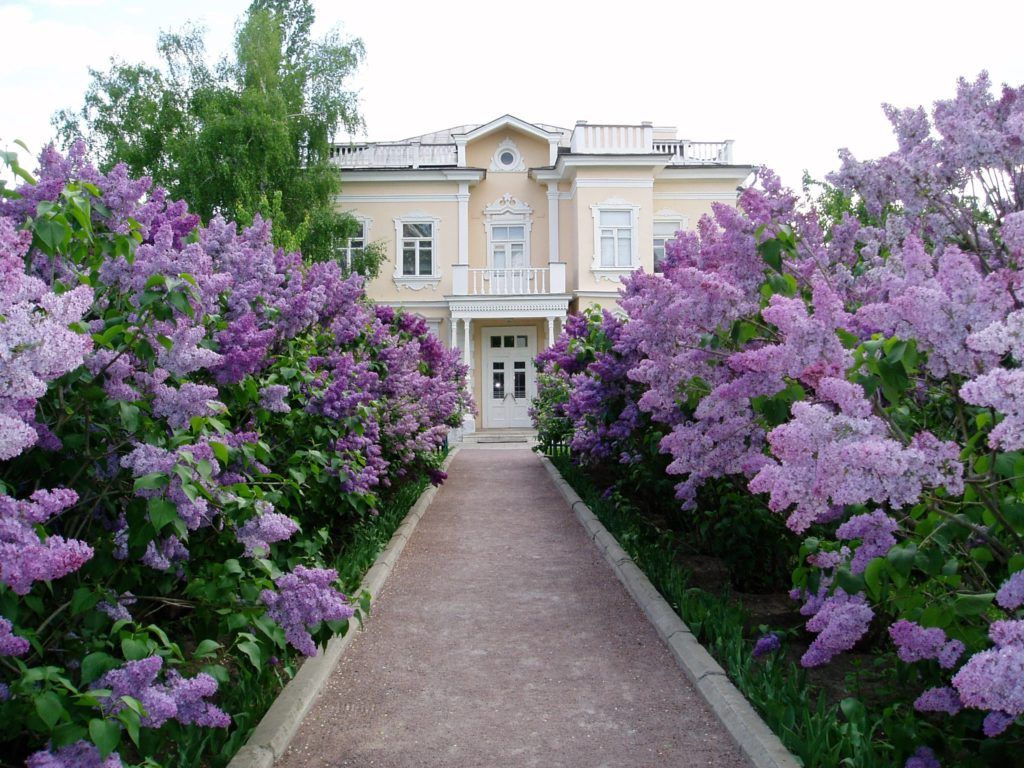
There are two main expositions in the Sholokhov and Bokovsky districts of the Rostov region. The area of the museum-reserve is 38,236 hectares, 3,820 of which are a protected landscape-reserve zone.
Collections
M.A. Museum Sholokhov has unusual collections, thematically related to the life, work, life of the writer, as well as preserving the nature of his native land:
- The house where M.A. was born Sholokhov and lived with his parents until 1910 (farm Kruzhilinsky);
- House-Museum, where the writer created most of the "Don stories" (village Karginskaya);
- The house where M.A. Sholokhov lived and worked in the 1930s, where “Virgin Soil Upturned” and the third book of “The Quiet Flows the Don” were born (the village of Vyoshenskaya);
- The estate where the writer lived with his family from 1949 to 1984, where he created the story "The Fate of a Man", as well as the 2nd book of "Virgin Soil Upturned" and several chapters of the novel "They Fought for the Motherland";
- Literary exposition “M.A. Sholokhov. Time and Fate”, located in the building of the former gymnasium of the village, where the future writer studied (in 1918).
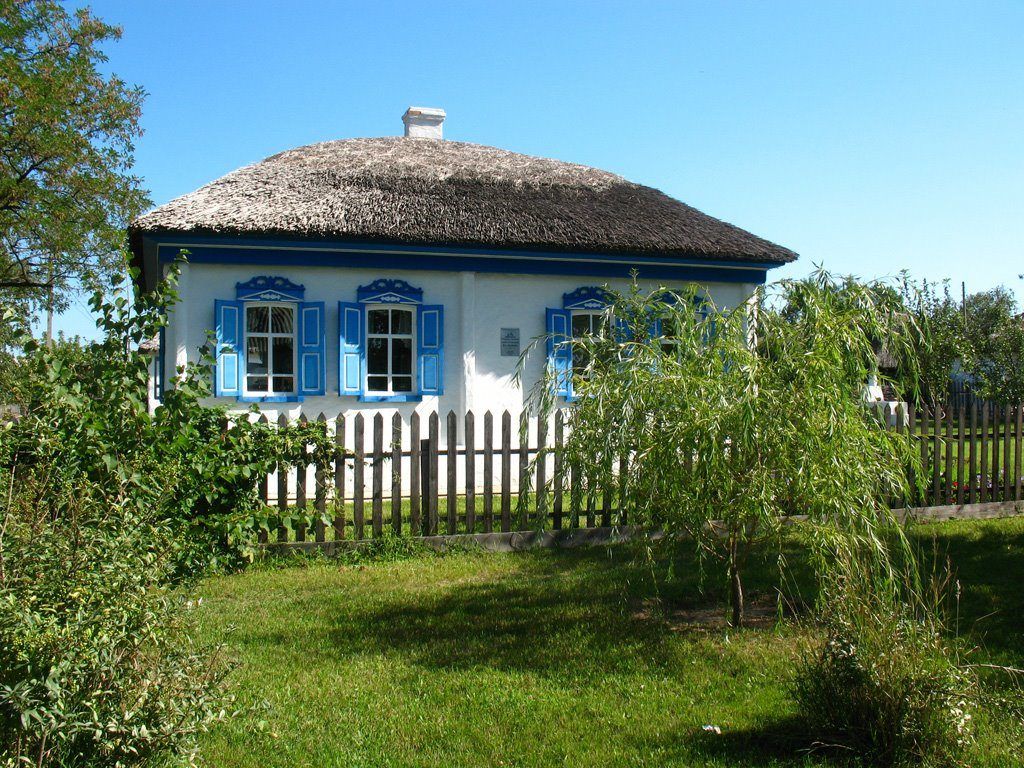
In addition, the museum annually, at the end of May (on the writer's birthday), hosts the All-Russian folklore festival "Sholokhov Spring", which welcomes guests not only from different cities of Russia, but also from countries near and far abroad.
Excursions
The purpose of the museum is to acquaint guests not only with the life of the writer, but also with the culture, traditions of life and way of life of the Don Cossacks, to show the beauty of the nature of the Don region. And, since the museum is also a nature reserve, the following excursions are held in it:
- excursions to the main objects of the museum;
- sightseeing tours of Sholokhov's places and the village of Veshenskaya;
- weekend tours;
- tours for schoolchildren and students;
- event tours (including participation in such holidays as "Sholokhov Spring" and "Kruzhilin Cleaning");
- fishing tours;
- ethnographic tours;
- ecological routes;
- literary routes;
- horse trails;
- boat trips along the Don.
- In addition, there are additional services that ensure a comfortable stay for guests:
- business tours;
- holding seminars, presentations, business meetings and corporate events;
- transport service;
- organization of accommodation and meals.
Cost (in rubles)
- A single ticket for the museum - 900 (adults), 500 (students);
- Excursions in the village of Veshenskaya - 50-500 (adults), 30-500 (students);
- Excursions in the village of Karginskaya - 50-200 (adults), 50-100 (students);
- Excursions in the farm Kruzhilinsky - 50-200 (for everyone);
- Visiting events and exhibitions in Rostov-on-Don - 150-250 (for everyone);
- Stable of the Museum-Reserve (single ticket for a tour, riding, feeding a horse, a magnet) - 260 (for everyone);
- Sightseeing tours (groups of 10, 20, 30 people) - 600-3,000 (for everyone).
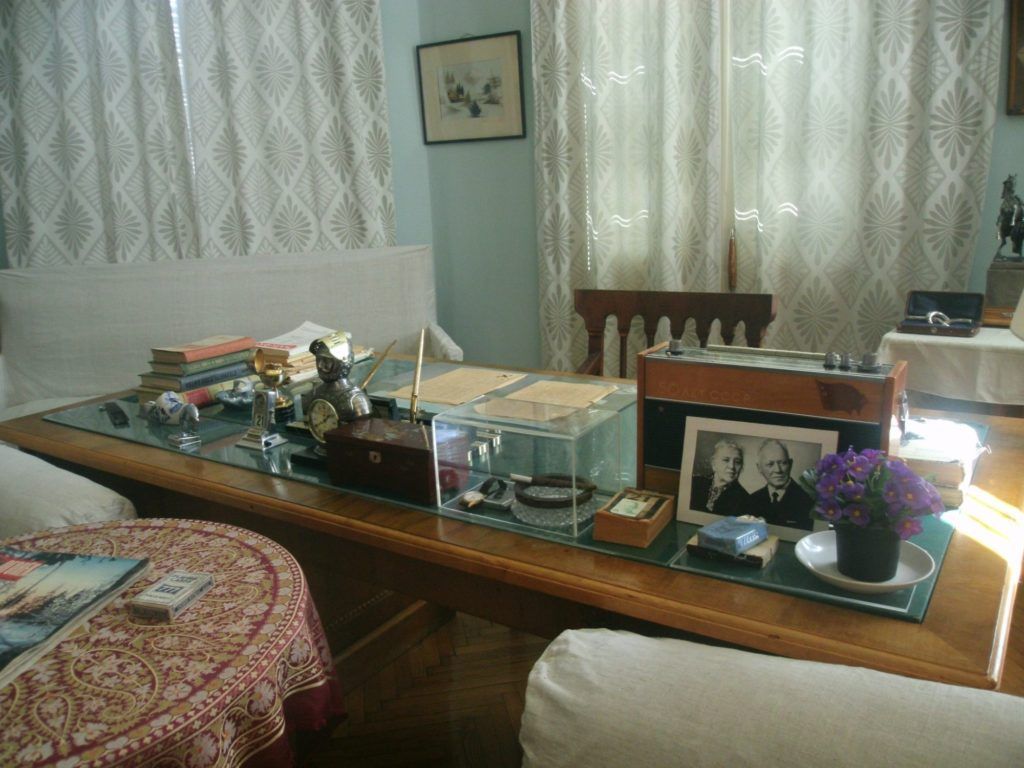
- many positive impressions;
- the museum inspires and spiritually enriches;
- various, unusual excursions;
- the opportunity to visit the stables of the museum;
- comfortable living conditions;
- the opportunity to enjoy the nature of the region;
- beautiful building architecture.
- high ticket prices.
Regional Museum of Fine Arts
votes 0
Address: Pushkinskaya street, 115
Working hours: daily from 10:00 to 18:00, Tue – day off; cash desk - from 10:00 to 17:30
☎ Phone: +7 863 240-23-33
Officially, the museum was opened in 1938, but the collection of the museum began its formation much earlier, representing at the beginning of the 20th century. exhibitions of paintings by Russian artists.Since its foundation, the main exposition of the museum has been replenished with exhibits from the Hermitage, the Russian Museum and the Tretyakov Gallery. In 1942, the collection suffered significant losses, as it was plundered by German troops. Subsequently, some of the paintings were returned, but it was not possible to return the collection to its pre-war appearance.
Today, the museum is located in two buildings - in an old mansion built in 1898. on Pushkinskaya Street, and on Chekhov Avenue. The main exposition is located in the building on Pushkinskaya, the fourth floor of which is completely occupied by a restoration workshop and a museum depository.
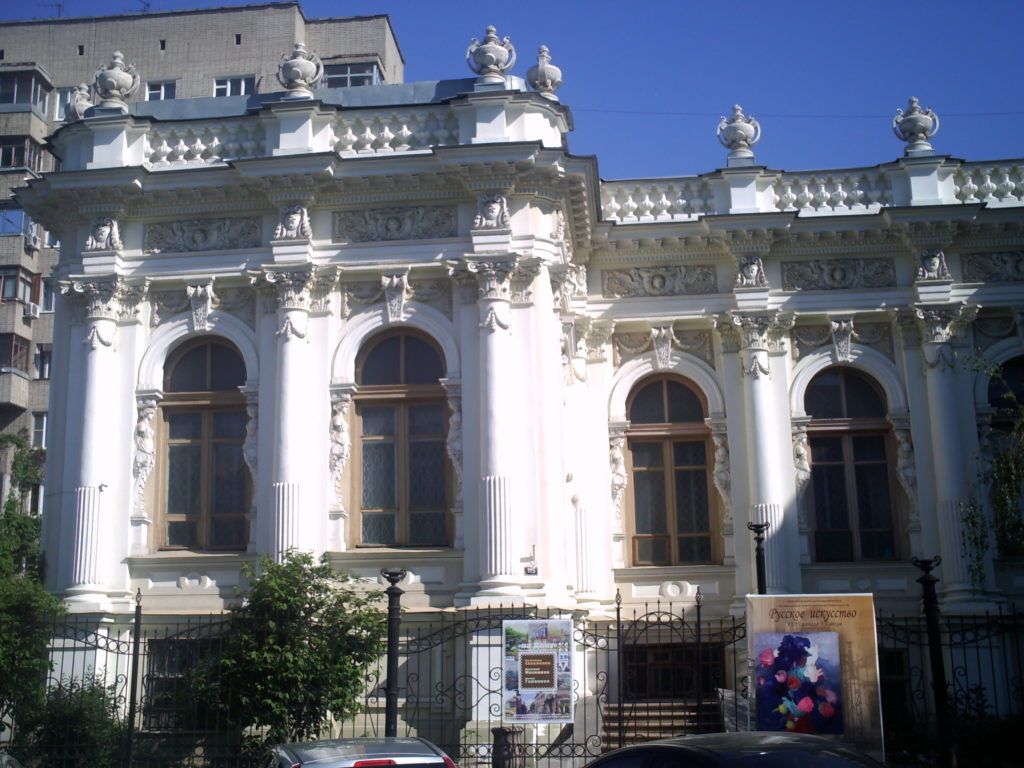
The museum fund stores over 6,000 works of various types of art, and is divided into collections: graphics, painting, sculpture and arts and crafts. Each collection is divided into time sections, as well as countries (schools).
Collections
Collection of Russian art. It is a significant part of the main exhibition. This collection includes works by Russian masters of painting, exhibited in chronological order - from the works of icon painters to works of various art movements of the early 20th century. This includes works by famous artists of the 18th-20th centuries, such as A. Antropov, K. Bryulov, I. Aivazovsky, I. Repin, I. Kramskoy, K. Korovin, I. Levitan, V. Surikov, M. Saryan. In addition, the collection includes works by artists born in the Don region: A. Avanesov, N. Dubrovsky, G. Artemov, I. Krylov. Department dedicated to the art of the XX century. founded in the post-war period, it contains works of graphic artists, artists, sculptors and applied artists: works by I. Mashkov, A. Laktionov, V. Fomin, G. Pimenov, A. Osmerkin, A. and S. Tkachev and others.
Collection of Western European Art of the 17th-19th centuries.A small but rich collection representing all major European schools: Dutch, German, Flemish, French, Italian. The collection also includes works by G. Carpione, M. Preti, a painting by P. Rubens, and a separate room is reserved for the exhibition of paintings by the "small Dutch".
Collection of works of masters of the East. It is located in the department of foreign art, and includes exquisite examples of applied art and sculpture from China and Japan: twin sculptures of He-He (the oldest exhibits in the collection), Chinese porcelain items, netsuke figurines of the 19th-20th centuries, a samurai sword (“ tanto"), as well as traditional guohua painting.
In addition, the Regional Museum of Fine Arts organizes traveling and virtual exhibitions.
Exposure
On Chekhov Avenue, 60:
- Painting. Foreign art of the XVII-XIX centuries;
- Graphic arts. Foreign art of the XVII-XIX centuries;
- Art of the East (China, Japan, India);
- Decorative and applied arts of the Don;
- Decorative and applied art of Europe.
On Pushkinskaya, 115:
- Russian art. Iconography of the 17th-19th centuries;
- Russian art. Painting XVII - early. XX centuries
Cost (in rubles)
Ticket to visit the exposition "Russian Art": 40-60 (children, conscripts, people with disabilities), 70 (students), 80 (pensioners), 120 (other categories of visitors);
Ticket to view the exposition "Western European Art": 20-40 (children, conscripts, people with disabilities, pensioners), 35 (students), 60 (for other categories of visitors);
The cost of visiting the exhibition in the Children's Art Gallery: 30-80 (children, conscripts, people with disabilities, pensioners), 70 (students), 120 (other categories of visitors).
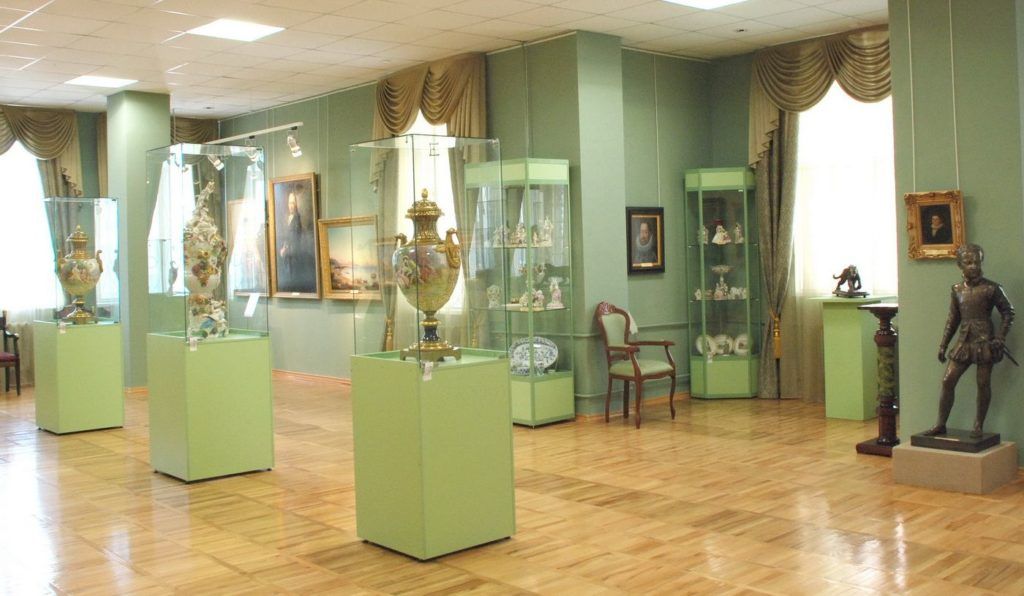
- beautiful architecture of an old mansion;
- holding classical music concerts;
- the opportunity to get acquainted with the paintings of famous artists;
- friendliness and attentive attitude of museum staff.
- moderate ticket prices.
- the room is cold.
Rostov Museum of Cosmonautics
votes 0
Address: Stachki Avenue, 231/2
Opening hours: daily from 9:00 to 16:00
☎ Phone: 8 (918) 578-88-69
The Rostov Museum of Cosmonautics is part of the scientific and educational complex "Vertical", which conducts research in the field of astronautics. "Vertical", in turn, won recognition among those who are interested in the boundless expanses of the Universe and the possibilities of man in outer space.
The opening of the museum took place in September 2009, initiated by V.N. Motin is an Honored Designer of the Russian Federation, Doctor of Science, Academician and Vice President of the Russian Academy of Engineering. The first tour was conducted by Yu.V. Usachev - Hero of Russia, cosmonaut.
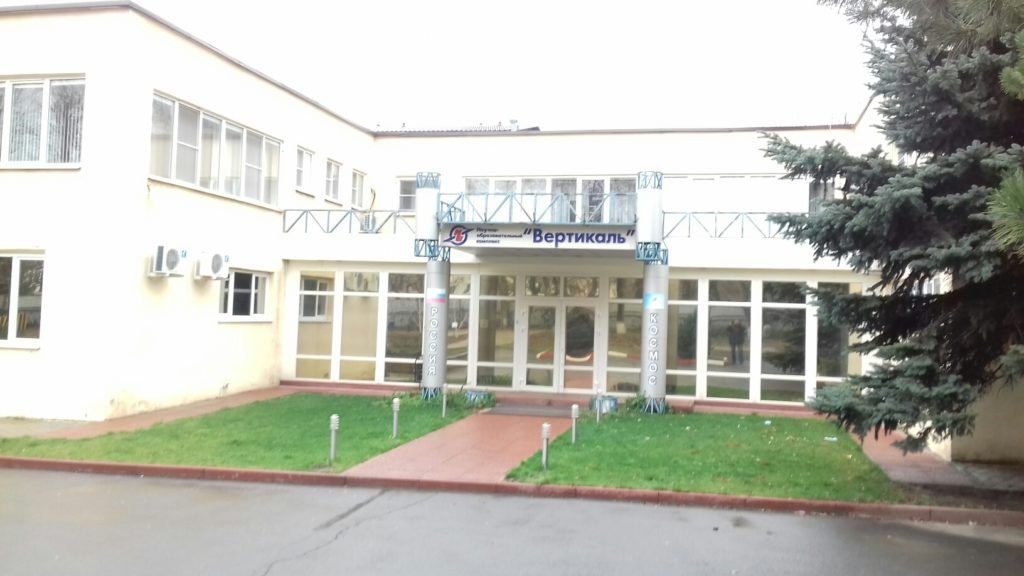
Currently, the museum conducts research and cultural education activities, educational and entertainment events.
Collections
The museum offers its guests to get acquainted with such interesting and unusual objects as:
- models of space technology;
- astronaut suits;
- spacesuits;
- models of spacecraft and satellites;
- things belonging to the astronauts;
- archival documents;
- spacecraft orientation instruments;
- navigation instruments of missiles and modules;
- spaceship models;
- photographs and books on the theme of space;
- coins, stamps, awards.
In addition, the museum provides an opportunity to learn how the life of astronauts works, offering food samples, unusual ways of storing food and other unique items that allow you to lead an ordinary life in unusual conditions.
Exposure
The exhibits of the Museum of Cosmonautics are so unusual that it is recommended to view them only with a professional guide.
The basis of the exhibition includes more than 400 different items, the most special of which are:
- details of the Soyuz spacecraft;
- astronauts' tools necessary for work in the orbit of our planet;
- emergency equipment, for example, a spacesuit that allows you to stay up to 5 days without the danger of hypothermia (used when landing in water).
- The center of the exhibition is the Soyuz TMA-10 space descent vehicle of the fifteenth visiting expedition to the ISS. This unique object has taken its place in the museum thanks to the Roscosmos State Corporation. Museum workers restored the device and converted it into a simulator for simulating the maneuvers of manned spacecraft. In the Southern Federal District of the Russian Federation, such a simulator is the only operating model.
- In addition, visitors to the Museum of Cosmonautics can experience the convenience of a lodgment - a chair in which the astronaut is during launch and landing. The museum also organizes virtual "flights" into space, and tells about life and work in orbit in the form of a documentary.
Cost (in rubles)
- Ticket to visit the exposition - 250 (adults), 150 (children);
- Photography - 250;
- Video filming - 450.
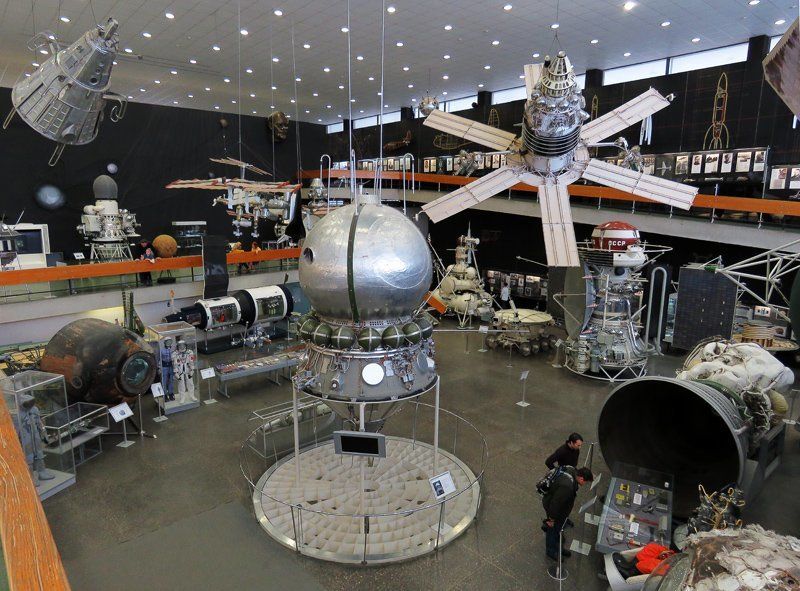
- museum exhibits are of great interest to both adults and children;
- friendly museum staff;
- wonderful guide;
- spectacular documentary;
- exciting, exciting excursions.
- not found.
Museum of railway technology in the open air
votes 0
Address: Gnilovskaya station, Rostov-on-Don
Opening hours: daily, except Monday, from 10-00 to 17-00
☎ Phone: +7 (863) 238-28-95.
In 1991, students of RIIZhT (Rostov Institute of Railway Engineers) and RTZhT (Rostov Technical School of Railway Transport), as well as enthusiasts of the All-Union Society of Railway Lovers (VOLZhD) and line workers began to collect a collection of old rolling stock. Thanks to the support of the railway management (deputy head of the railway A.M. Lubyatov and former deputy head of the locomotive service V.F. Ivanov), a collection of railway equipment was completed over several years.
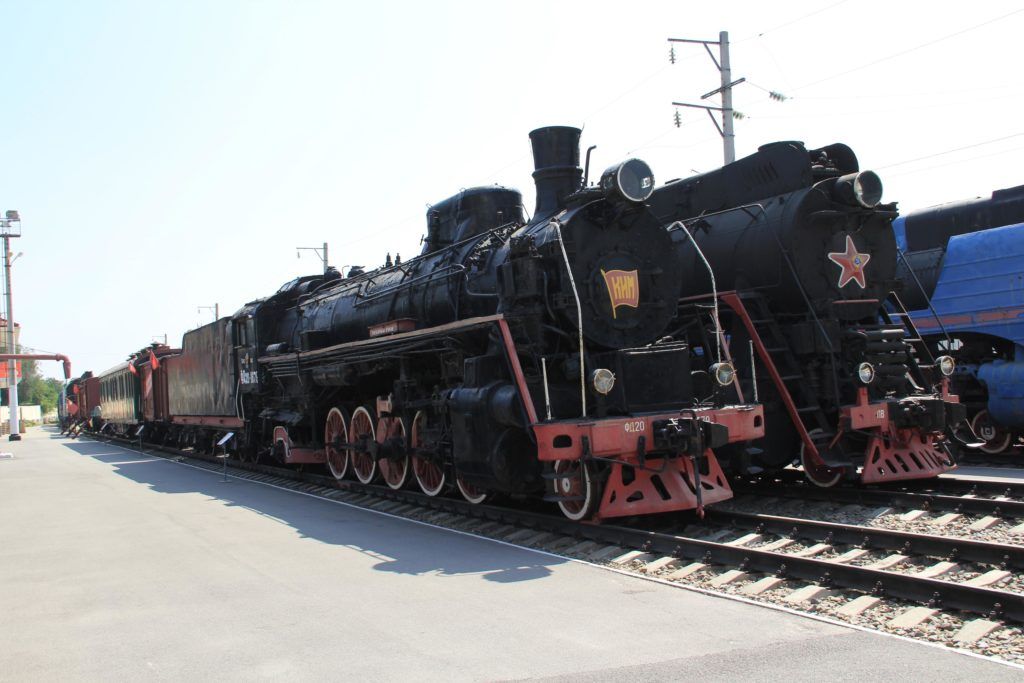
On August 1, 2003, on the eve of the holiday - the day of the railway worker, the Museum of Railway Equipment of the North Caucasus Railway was opened at the Gnilovskaya station, which became a branch of the Road Museum of History (in 2005 it turned 45 years old). At first, the exhibition area of the museum included up to 40 samples of ancient technology:
- steam locomotives (including pre-war, operating ones);
- passenger cars;
- the first electric locomotives and diesel locomotives;
- samples of railway equipment;
- crane 1935 buildings and weighing 45 tons, which is the only one preserved on the North Caucasian-Railway;
- mechanical semaphore.
Collections
Today, the museum's exposition has over 50 exhibits, including:
- locomotives, diesel locomotives and electric locomotives;
- electric train;
- freight and passenger cars;
- railway equipment;
- semaphore and traffic light;
- hydrocolumn;
- restored VL22M electric locomotive;
- motor locomotive 1935;
- post-war shunting steam locomotive;
- old cistern;
- steam boiler model;
- steam distribution mechanism model;
- motorized rubber TD5 and motorized rubber of the 1930s (in working condition);
- restored wagon-car from the times of the Great Patriotic War, with a restored interior;
- a Romanian cistern from the 70s of the 19th century, which belongs to the trophy rolling stock and is one of the most unique and ancient exhibits of the museum;
- the oldest surviving wagon, produced in 1869 by the English factory "Glosser" and more than 20 samples of not yet restored equipment from the rolling stock collection.
Retro tours
Daily retro tours have been held by the museum since May 2005. The composition of the retro train consists of two cars and a locomotive SU 250-64, which was produced in the 40s of the XX century. The trip lasts just over two hours, with a stop at the Gnilovskaya station, where the museum is located. There, for passengers of a retro train, excursions are conducted. The retro train departs from the Suburban Station at 10:38 (Monday to Friday) and at 13:50 (Saturday and Sunday).
Price:
Tour ticket - 100 rubles;
Photography — 200 rubles. (photographing on a mobile phone is free).
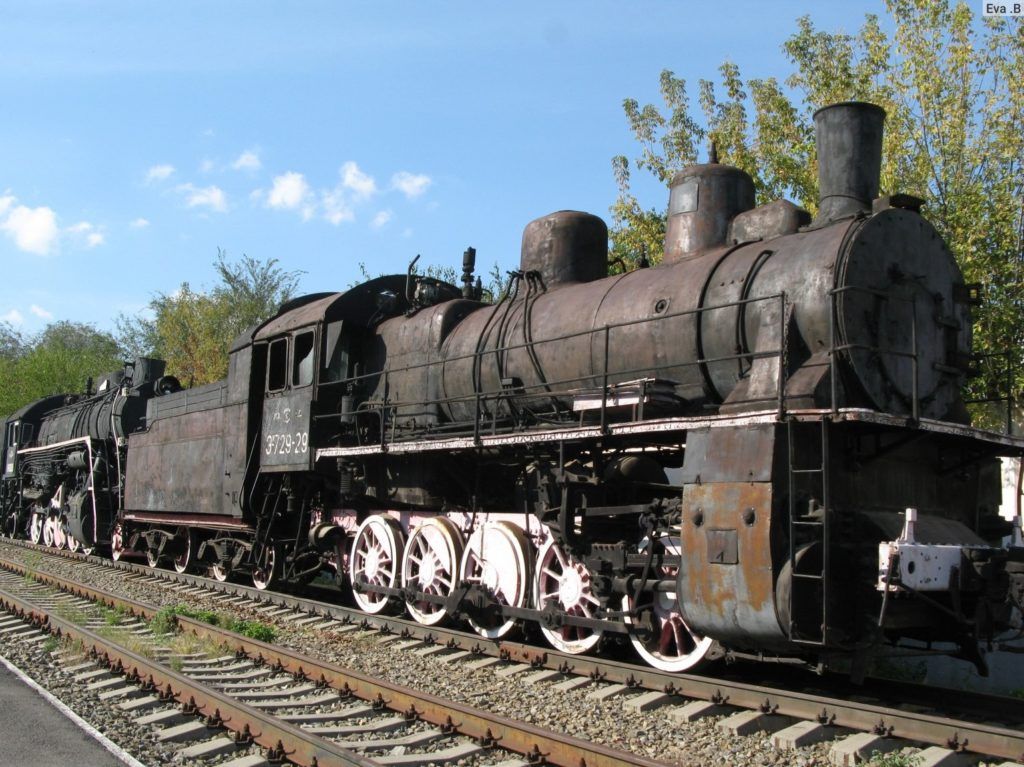
- all exhibits can be touched and even climbed inside;
- informative, interesting exposition;
- an impressive collection of samples of technology;
- attractive ticket price;
- a lot of fun to visit.
- far from city center.
Rostov-on-Don also has many art galleries and exhibition centers, museums dedicated to history, science and technology. And which one to choose to visit depends only on personal preferences, interests in a particular topic.
In any case, every guest of the city will definitely find an informative and fascinating excursion for himself, will be able to touch the history of the city, get acquainted with its famous inhabitants, its nature and the unique features of the region, and, of course, get a lot of positive impressions.
new entries
Categories
Useful
Popular Articles
-

Top ranking of the best and cheapest scooters up to 50cc in 2022
Views: 131650 -

Rating of the best soundproofing materials for an apartment in 2022
Views: 127689 -

Rating of cheap analogues of expensive medicines for flu and colds for 2022
Views: 124517 -

The best men's sneakers in 2022
Views: 124031 -

The Best Complex Vitamins in 2022
Views: 121938 -

Top ranking of the best smartwatches 2022 - price-quality ratio
Views: 114978 -

The best paint for gray hair - top rating 2022
Views: 113393 -

Ranking of the best wood paints for interior work in 2022
Views: 110318 -

Rating of the best spinning reels in 2022
Views: 105327 -

Ranking of the best sex dolls for men for 2022
Views: 104363 -

Ranking of the best action cameras from China in 2022
Views: 102215 -

The most effective calcium preparations for adults and children in 2022
Views: 102010

